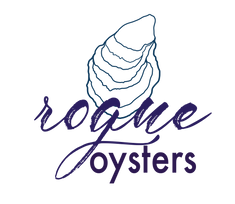A study in the March 2021 issue of Journal of Experimental Marine Biology and Ecology has detailed an experiment carried out to determine whether oyster aquaculture provided similar benefits to natural oyster reefs. The study, "Consumption rates vary based on the presence and type of oyster structure: A seasonal and latitudinal comparison," details an experiment attempting to determine the effect of an oyster farm on “trophic transfer” (definition coming) as compared to a natural reef.
For those of you wondering, “trophic transfer” is basically the passing of energy by one thing eating another thing. Depending on the scientific body, there are four to five trophic levels in the Marine Food Pyramid that lay out how marine animals will typically eat the biggest food source they can that is readily available and less dangerous than themselves. Whatever is left over after a feeding session decomposes and feeds organisms at the bottom of the food chain. And there you have it: The Marine Circle of Life.

For a little more detail on the levels, Trophic Level One (e.g. phytoplankton) is the producer level that makes their own food using light and available decomposed matter. Trophic Level Two contains herbivorous critters that treat Level One organisms like a buffet (e.g. oysters!). Trophic Level Three is made up of larger, carnivorous critters that eat Level Two organisms, and Level Four are your apex predators at the top of the food chain that eat what they want, but usually items in the level below them. The diagram above from University of Waikato helps make it clear using five levels instead of four.
We digress so back to the study. In a natural setting, an oyster reef serves as habitat for a lot of small animals, and even a nursery for some larger ones. Reefs are home to juvenile blue crab, small crabs like mud crab, grass shrimp, eels, small fish like skillet fish and blennies, mud worms, and plenty of other species like pipefish and even seahorse. These guys are all lower on the trophic scale. Because they choose to make a home on the reef, this attracts animals from the higher trophic levels. So big fish are attracted to reefs because they know there is food available there.
Fun Fact: Locally, oyster reefs are called “rocks,” and Striped Bass are often found hanging out at these “rocks” hunting for food. This is why, locally, Striped Bass are called “Rockfish.”
So oyster reefs are basically hotbeds of aquatic activity. They serve as a hiding spot for smaller organisms; provide a nursery function by providing an egg-laying area and place for juveniles to hide; and ultimately, provide ample hunting grounds for larger predator fish.
This experiment set out to determine if oyster aquaculture encouraged an equivalent trophic transfer as natural reefs. And they did! All farms studied provided a greater or equal level of trophic transfer. Float farms and rack-and-bag farms were used in the experiment, with float farms performing better. Rack-and-bag farms are located in shallower water near shore, with some being intertidal, which likely contributed to the lower performance.
The reason oyster farms have similar effects on trophic transfer is that oyster farms resemble natural reefs in all the ways that matter to the environment, but simply take on a different form. Our oysters are the same species of oyster that are already in the water; we are NOT introducing a non-native species that will adversely impact the ecosystem. Our oysters are already a part of the ecosystem, so they fit into the natural order almost immediately. Also, oysters do not require feed, fertilizer, or any sort of additive to be added into water, nor do we need to do any plowing, fencing, clearing, or anything that alters the environment and might impact the biodiversity of the area.
Regardless of the type of farm, oysters (and the farming gear) provide an area for sea creatures to find shelter and eat. So whether it is a reef or a farm, the oysters are providing the same ecological function. In our case, our farm is placed in an area that it otherwise barren. Further inshore there is underwater grass, and further out from shore in the deep water, there are natural oyster beds. But our farm sits on barren sand … or it was barren till our farm showed up and created a habitat!
Our farm is an on-bottom farm at a greater depth than used by rack-and-bag systems so we’re a little different than what was studied. However, we believe our farm probably falls in somewhere close to the float farms. The sheer number of critters that live in our gear is a great sign, and the schools of Rockfish that follow us around in the summer waiting on us to lift a cage, as well as the dolphins that regularly visit, strongly suggest that we may have created a healthy ecosystem on the farm. Of course this is anecdotal, but we think our oysters are making a big difference in the circle of life in the Rappahannock River and we’re standing by it!

Leave a comment